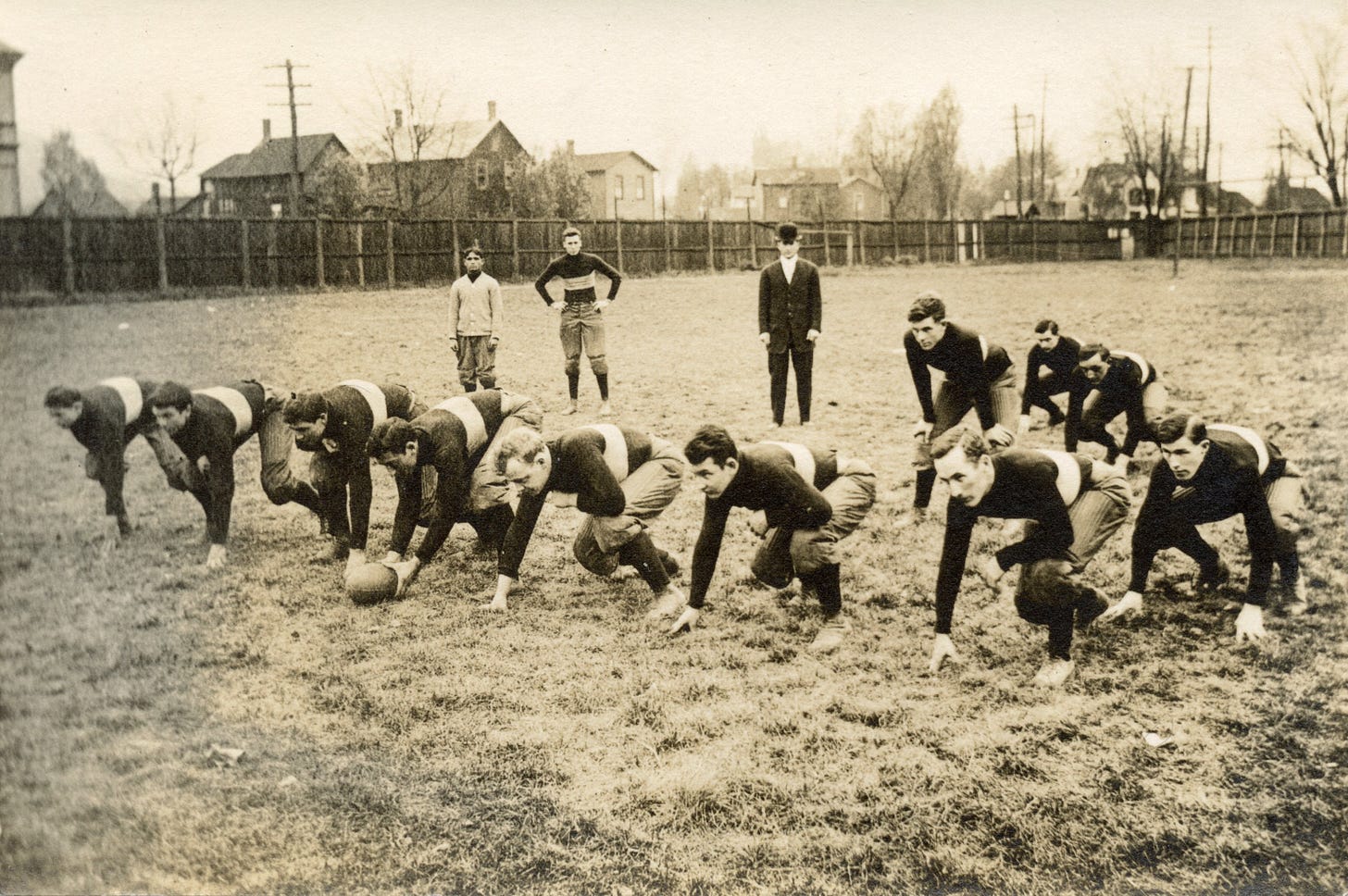Today's Tidbit... Taking A Stance On Handedness
Football is a funny game with significant attention paid to detailed techniques that often change as the broader game changes. The recent acquisition of a 1915-era RPPC reminded me of that since it shows what appears to be a college team lined up in the Carlisle or Single Wing offense. It is a nice image by itself, but the players' stances are what struck me since none of the eleven players are in stances used by players in the same positions today.
Ignoring the coach, substitute, and the manager or ball boy in the background, we have a quarterback aligned behind the left guard who stands in a two-point stance with his hands on his knees. The tailback, fullback, and wing are in four-point stances, which I haven’t seen since a Wishbone fullback or two found it handy. How the team lines up and the consistency of their stances suggest it is a well-coached group, so their four-point stances may be a Pop Warner carryover. Warner was the first to emphasize four-point stances, figuring that if a crouching stance made sense for sprinters, the same would work for backs.
Now, let's look at the line. Few high-level teams line up in close or double-tight formations anymore other than for short yardage and kick attempts, but both ends are aligned tight in the image. Back then, teams often split their ends in punt formation, but the ends still took three-point stances.
Some receivers lined up in two-point stances in the early 1960s. More did so as defenses increased their use of press coverage and offenses countered with short passing routes. Still, some NFL receivers were in three-point stances in the late 1970s.
Check out the center. He holds the ball at the near end, employing a technique that sends the ball end over end when snapped. Some teams may use that approach today, but there are not many.
The guards, tackles, and ends are in three-point stances, opposite today's norm. Today, when linemen on the left side are in a three-point stance, they have their left hand down and their left foot back. Likewise, the linemen on the right side have their right hand down and right foot back. It could have just happened that the right side of the line had their left hand down, and the left side had their right hand down, but that seems unlikely.
The handedness of offensive line stances became a significant factor when the blocking rules changed in the late 1970s and early 1980s. As linemen could extend their arms when blocking, pass-blocking techniques evolved to include kick stepping and kick slides. The technique shift required offensive linemen to have their outside foot back and the same hand down. These changes in stances and pass-blocking techniques played a role in the 1982 season, which marked the first time college teams passed for more yards than they ran the ball.
So, an old image contains a lot of information and reminds us that football has seen many changes since the photographer printed this RPPC. Of course, the poor fellas in the picture had no idea we'd review their stances 110 years later.
Football Archaeology is reader-supported. Click here to buy one of my books or otherwise support the site.



